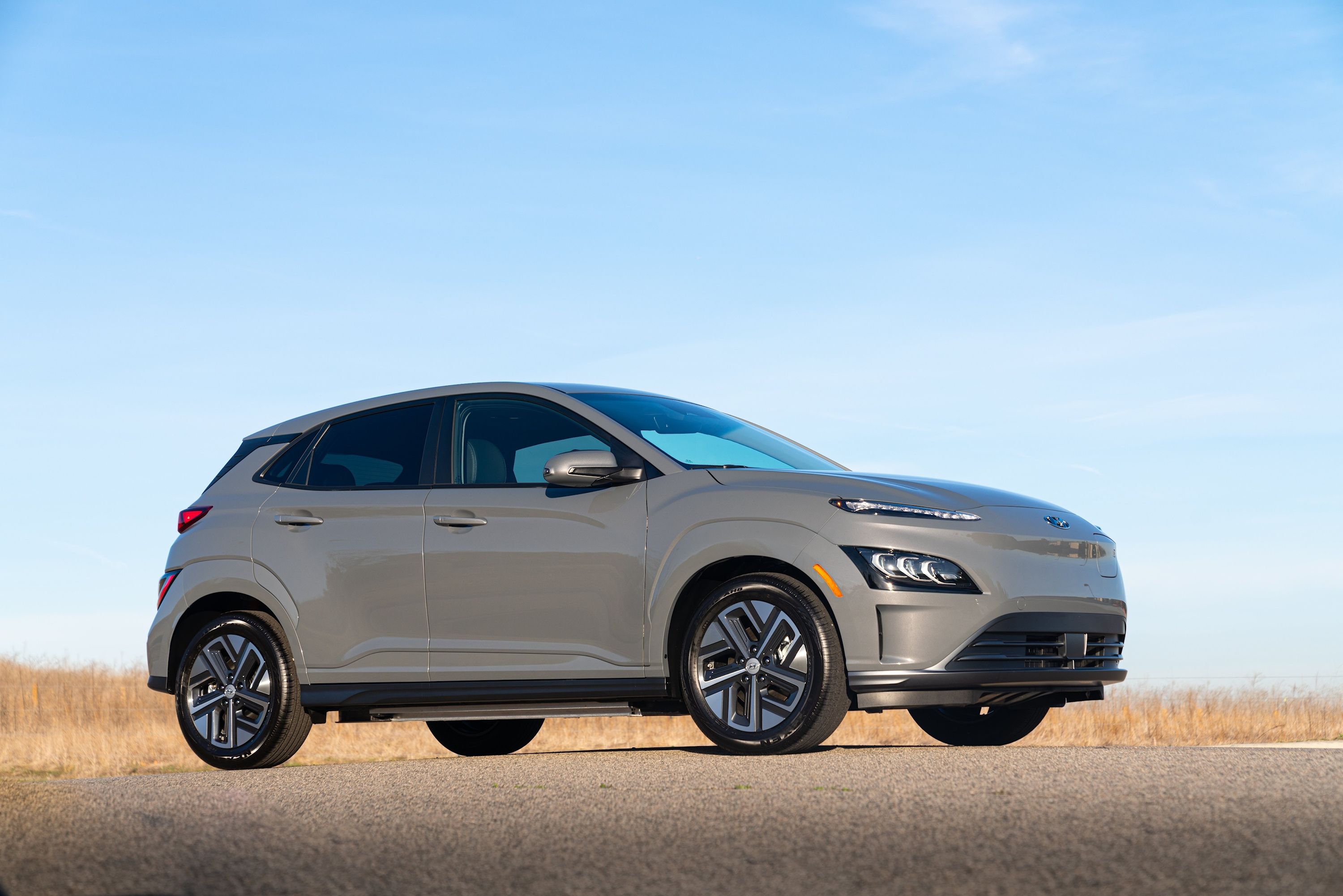
Like its combustion-engined sibling, the 2021 Hyundai Kona EV has arrived with freshened exterior styling and technology upgrades aimed to keep the popular subcompact crossover competitive. The cosmetic updates give the EV a more unique look compared to the regular Kona, the most notable being a new front end. While the images you see here are of the European model, but we suspect the US model will look exactly the same.
Instead of a radiator-like design, there's now a smooth body panel with restyled headlights at each side. Also new are narrow LED daytime running lights, and a couple of vertical inlets on the redesigned front bumper. Hyundai claims this helps to reduce the amount of turbulent air reaching the front wheel arches. The functional air intake in the lower bumper has been enhanced thanks to horizontal satin accent bars. The charging port remains up front, although it's better hidden than before.
No significant changes have been made to the rear end, aside from slightly tweaked taillights. Five new exterior paint colors will also be offered. As with the regular Kona, the electrified version receives a new 10.25-inch digital dial display with Apple CarPlay and Android Auto compatibility. There's also a new Bluelink smartphone voice control upgrade, an app that displays the battery and range state and charging times, and that enables remote charging and remote climate control.
Other notable new features include an ambient lighting system in the passenger and drive side footwell. Two new interior colors arrive, black or two-tone grey upholstery, in either cloth or leather.
Power options remain unchanged, meaning the Kona EV comes standard with a 64-kWh battery pack and a 201 hp and 291 lb-ft of torque electric motor. Range is rated 300 miles on a single charge while top speed increases to 104 mph. When plugged into a 100-kW DC fast charger, the battery can go from 10 to 80 percent charge in about 47 minutes.
The upgraded Hyundai SmartSense safety suite includes rear cross-traffic collision-avoidance assist and blind-spot assistance. Another new piece of safety tech is called Leading Vehicle Departure Alert, a system that alerts the driver if they don't react fast enough when the vehicle in front begins to move. Hyundai has also added eCall that automatically calls emergency services if the airbags deploy.
Official pricing hasn't been announced but it shouldn't change much from the outgoing model. Expect sales to begin early next year.
